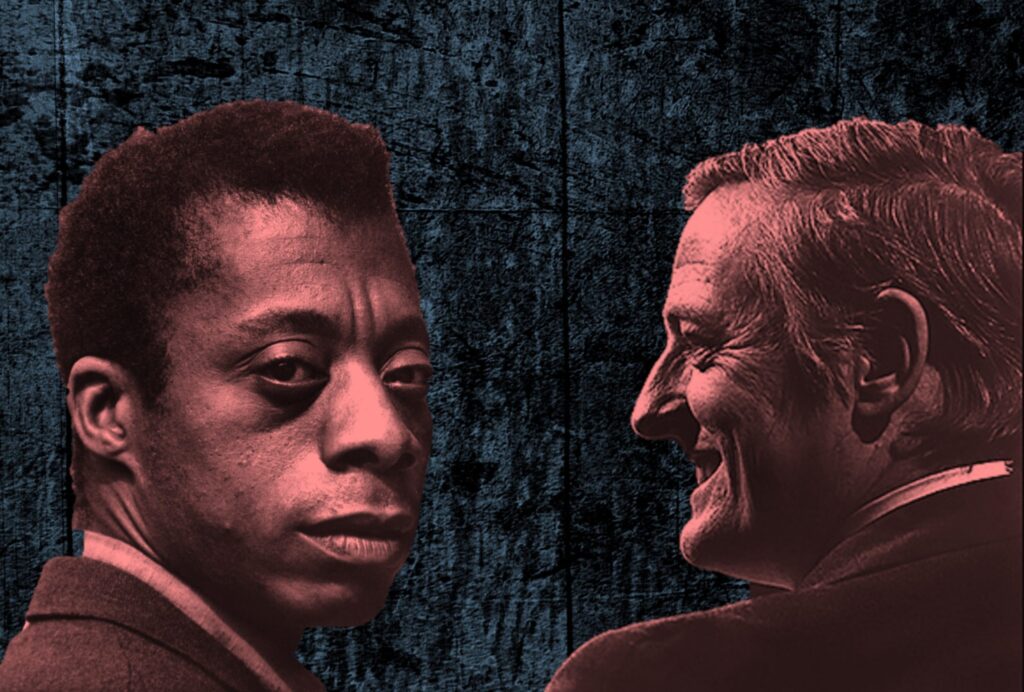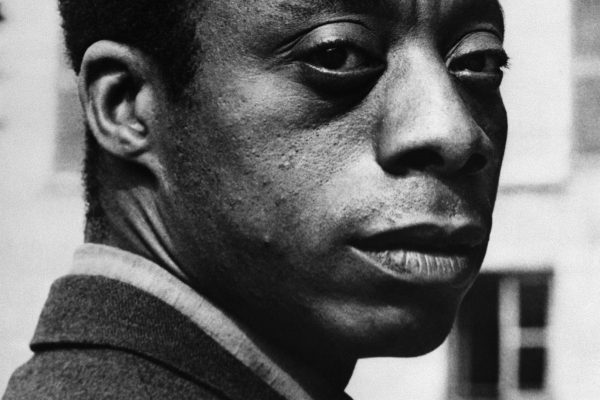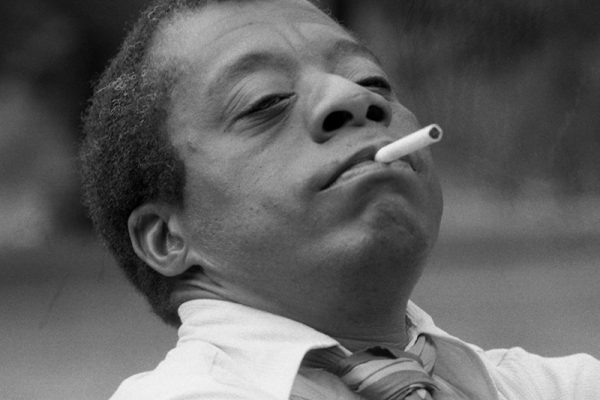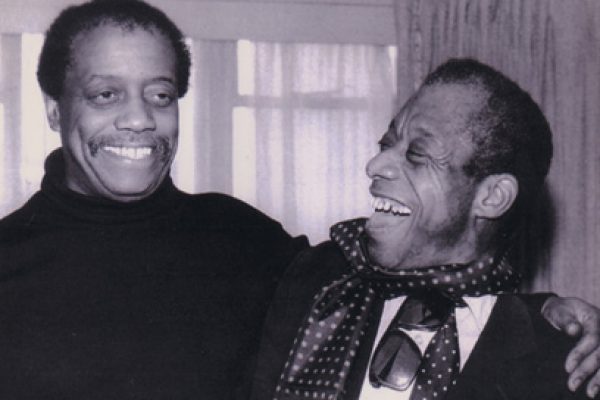The Fire is Upon Us: James Baldwin, William F. Buckley, Jr., and the Debate Over Race in America
Nicholas Buccola
Princeton University Press, $29.95 (cloth)
It was January, 1965. Peter Fullerton, a history student at Cambridge University, could scarcely believe he was on the phone with James Baldwin’s publicist. The publicist wanted to arrange a speaking event to promote Baldwin’s latest novel, Another Country, but Fullerton, as the president of the Cambridge Union, puffed himself up in an effort to uphold the oldest debating society’s rules and reputation. If Baldwin wished to come, the union would certainly welcome him, but the appearance would have to take place within the expected debate format, and Baldwin would have to be matched against a suitable adversary. After some effort, Fullerton secured the participation of another American to be Baldwin’s opponent: the conservative writer and founder of the National Review, William F. Buckley, Jr.
By studying how the two men got to share a stage, we can learn something more profound about the struggle for black equality and the origins of the modern conservative movement.
The debate that took place on the night of February 18, 1965, is the unifying event for Nicholas Buccola’s scintillating new book, The Fire is Upon Us. Recorded by the BBC, the debate was a dramatic pairing. Baldwin, born to a day laborer and housekeeper in Harlem, had risen to become an internationally recognized critic of American inequality; Buckley, by contrast, a child of wealthy Southerners and raised in the privileged environment of Connecticut, had spent his energies as an adult trying to carve out a libertarian-conservative vision from the racial politics of the age.
Buccola is less interested in who won the debate (according to the audience, Baldwin trounced Buckley by a three-to-one margin) than in what the event signified politically and culturally. Each man had “reached the height of their prominence at nearly the same moment,” Buccola says, and both had a major impact shaping popular attitudes about the civil rights movement. By studying how the two men got to share a stage, we can learn something more profound about the struggle for black equality and the origins of the modern conservative movement—two legacies that remain with us today.
The book’s title is a play on that of Baldwin’s 1962 book, The Fire Next Time, in which he urged black Americans to refuse to “become like white people,” to take advantage of integration to “force our brothers to see themselves as they are,” and to “make America what America must become.” Buccola contends that Baldwin drew back the curtain on the “racial nightmare” of black inequality while Buckley championed “a politics of racial resentment and nationalist authoritarianism” that is resurgent once again. And yet for all their differences, the two men shared a dark view of the law. Buckley was terrified of what he felt was “ruthless” liberal egalitarianism, while Baldwin felt that, in the hands of white men moved by racist intentions as well as progressive pretensions, the law had lost the power to accomplish great moral causes. Buccola’s generous rendering of their beliefs and concerns leaves us with a pressing question: is it possible to have political order—much less a just order—without law?
As Buccola tells it, the Baldwin–Buckley debate was the culmination of decades of thinking and writing on matters pertaining to politics and race. After setting the stage, the author turns the clock back roughly forty years, to the mid-1920s, in order to explore the men’s ideological development. The section dedicated to their childhoods is a single short chapter, while the next four chapters span the years 1946–1964, when the two men come into their own as public intellectuals. Buccola doesn’t return to the 1965 faceoff again for some 250 pages, but a little fortitude on the reader’s part will be rewarded, for these pages, which form the heart of the book, put Baldwin’s and Buckley’s ideas in the context of the turbulent politics of that period.
While Buckley did not originate modern conservative discourse all on his own, he certainly popularized it.
For Buckley, the United States was changing far too rapidly. The explosion of political activism and social unrest prompted him to develop an account of conservatism that helped existing institutions resist the onslaught of liberal change demanded of them. In an effort to build a coherent philosophy, Buckley wrote and published essays about “race relations” in the pages of the National Review in a manner he hoped was “non-racist” without promoting “dogmatic egalitarianism either.” For example, he felt that most notions of equality backed by the law threatened the social order, and so he consistently opposed judicially ordered desegregation as well as civil rights laws that inhibited the autonomy of private citizens. In place of law to help minorities, he advocated for greater “charity” shown by white citizens towards black citizens.
While he did not originate modern conservative discourse all on his own, he certainly popularized it. And it was a rhetorical strategy to which Buckley would return again and again: faced with a claim of inequality, change the terms of conversation from a question of justice to one about federalism or the rule of law generally. It was crucial to rally around states’ rights, he argued, in order to preserve both racial segregation and local control over other affairs. By scaling power downward, Buckley hoped that a consistent commitment to “decentralized political authority” across a wide range of issues would inoculate conservatives against charges of racism and opportunism. He felt no shame in praising John C. Calhoun, who had once defended a state’s right to nullify laws it believed to be unjust and accused abolitionists of turning the debate over slavery into “a crusade against us and our institutions.”
Often, as with voting rights, Buckley’s response to a charge of oppression was not to try to reduce the harms faced by individuals, but instead to find a different reason to distribute that harm among more citizens—showing that his main objection wasn’t to legal coercion as such. Disenfranchisement policies, for example, shouldn’t be done away with or pared back; instead, he argued, they should be broadened to take away the votes from more white citizens who couldn’t be trusted to make wise decisions. This approach entailed deflecting a charge of racism or illiberalism by leveling downward: locating what he believed to be a lower common denominator that might permit a challenged policy to stand, while changing the justifications to institutionalist or cultural ones and, at least theoretically, spreading the pain around.
Thanks to Buckley, even avowed racists had a plausible justification now, and mainstream conservatives could let segregationists have their way with a patina of deniability.
This second move of Buckley’s—leveling down—surely had a superficial appeal. It invited arguments based on formal neutrality in the law, hope in color blindness, and the defense of traditionalism. And it would satisfy those already predisposed to simple solutions or who lacked experience with other people’s suffering. But the approach wouldn’t guarantee the equal distribution of social pain. In truth, it was a dodge: by moving to a different argument entirely he could take egalitarian concerns completely off the table. Time and again, as Buccola demonstrates, Buckley never squarely confronted the actual damage caused by generations of racial inequality other than to express sympathy, and he refused to answer a claim of basic justice: what exactly did black Americans deserve given generations of forced labor and unequal treatment? Instead, no matter how unjust the conditions, Buckley always advocated for turning the page and asked black citizens to put aside their grievances. His arguments emphasized federalism over equality so that states could respond to moral decay and domestic ill, and nationalism over reconciliation so the country could be empowered to fight its Cold War enemies.
Since language is always entwined with power, Buckley’s sophisticated practice of non-racist reason-giving facilitated coalition-building between mainstream conservatives and the far right. Even avowed racists had a plausible justification now, and mainstream conservatives could let segregationists have their way with a patina of deniability. But while it was clever and effective, it should be noted that Buckley’s approach did not demand a particularly high bar: even arguments about social or cultural difference counted as “non-racist.” Buckley himself assumed the superiority of white culture, though he tried to take the edge off that claim by insisting that this might be a temporary state of affairs. As with many contemporary conservatives who indulge arguments about cultural incompatibility, Buckley drew a line between saying someone was born intrinsically inferior and saying that his social beliefs or habits or lifestyle was subpar.
In perhaps his most famous essay on the civil rights movement, “Why the South Must Prevail,” Buckley defended the decision by segregationist legislators to kill a provision in the Civil Rights Act of 1957 that would have allowed federal judges to rule in civil rights cases rather than conducting a jury trial. Buckley extolled the right of “white communities” to “take such measures as are necessary to prevail, politically and culturally, in areas in which it does not predominate numerically.” In other words, the right to a jury trial would enable white citizens to prevent black citizens from voting, and then let them get away with it in the name of racial paternalism. “The White community is so entitled,” Buckley reasoned, “because, for the time being, it is the advanced race.”
The temporal hedge—“for the time being”—was little more than a rhetorical ploy, though, for it is not as though Buckley spent much time interrogating the basis for his cultural assumptions or establishing criteria for determining when a downtrodden group might merit equal civil rights or access to society’s key social goods. This is where Buccola thinks Buckley failed most profoundly. Instead of promoting a consistent libertarian view or articulating a coherent set of rights of national citizenship, Buckley merely dusted off that older, plantation-era trope that all blacks and many poor whites were incapable of civilization.
But where Buckley stopped asking questions is precisely where Baldwin began. Whose culture actually needed defending? And by what authority could the white majority impose its traditions and priorities upon a black minority population in order to narrow the political rights and economic opportunities of the latter? When white citizens deployed the language of local control, law and order, or “comfort” or “welfare,” it raised red flags for black Americans, who had seen such justifications used time and time again to keep them permanently underfoot.
As Buccola shows, both Baldwin and Buckley shared an abiding skepticism about the potential for the law to achieve equality.
In the years preceding their fateful encounter, Baldwin penned the novels and essays that earned him a reputation for a distinctive style of criticism. Above all, Baldwin called attention to the “nightmare” of systemic racism. While one part of the white population was hell-bent on killing black folks and denying them basic political rights, another part—driven by fear, not evil—was urging black people to “go slow” and “be patient” and were busy inventing methods of rationalizing injustice that were “almost entirely and helplessly dishonest, when not, indeed, insane.”
No one was safe from Baldwin’s critique. He attacked excessive “virtuous sentimentality” on the part of liberal do-gooders by pointing out that “humanitarian impulses” were never historically enough to enact social justice. Worse, such vague idealistic gestures often merely obscured a “secret and violent inhumanity.” Americans had gotten to think of black Americans in purely abstract terms: the “negro,” Baldwin wrote, was either seen as “a problem”—“statistics, slums, rapes . . . violence”—or else he is seen as “a sign of ‘our’ social progress.” Either way, that stifling, binary set of stereotypes could never truly capture the complexities, struggles, and dignity of ordinary black lives.
As Buccola shows, both Baldwin and Buckley shared an abiding skepticism about the potential for law to achieve equality. For Baldwin, the law’s past shortcomings as an instrument for change led him to seek solace in psychology. He remade liberty into a psychological concept in order to keep hope alive: liberty was a “complex” and ultimately “private” state of mind—“freedom is the fire which burns away illusion” for both blacks who remained oppressed as well as whites who were still “trapped in a history they do not understand.” But that move also untethered freedom from any particular law or political developments that might do some good yet still fall short. Buckley’s legal skepticism, by contrast, was grounded in concerns of legitimacy and practical effect. To Buckley, the law was legitimate if deployed zealously to maintain order, but it became illegitimate when harnessed to serve the ends of social engineering.
Buccola tees up the men’s shared legal skepticism, but doesn’t chastise them for it. Yet this was a supreme failing on both their parts, for they rejected morality as an essential function of law. For this reason, neither man can offer us a roadmap to political justice. Buckley wrongly believed that order was more important than good order, and thus failed to appreciate that denying rights to a dispossessed minority undermined the very political community he so desperately wished to hold together. Even after the bloody events in Selma, for instance, and Lyndon Johnson’s admirable push for a voting rights bill, Buckley asked derisively, “What are the Negroes in Alabama being asked to believe will happen? Do they really believe that the vote would provide them with ‘peace and plenty on earth’?” The cruelty and meaninglessness of a world without justice has rarely been on such stark display.
The need for revolution versus the need for order was at the heart of the two men’s debate on the evening of February 18, 1965.
Baldwin was equally mistaken to empty the law of moral aspiration based on past disappointment. Slogans don’t “mean anything unless there are basic changes in the redistribution of wealth and power,” Baldwin would say. “The vote by itself does not mean anything if you don’t know how you are going to eat.” He’s right, but it is hard to see how the cultural and material transformation Baldwin endorsed could ever be effectuated if proponents of justice disarmed themselves. Turning away creates a truly vicious cycle, where failure of enforcement erodes belief in the capacity of law itself to do any good whatsoever in the future. Ever the revolutionary thinker, Baldwin had no patience for how one legal achievement might build upon another.
These amoral approaches to the law led both men to very different reactions to the civil rights movement. Baldwin marveled at the capacity of protesters “to frighten the mob,” but otherwise mostly prayed for a radical change of hearts and minds. Buckley, by contrast, was cautiously supportive of boycotts and peaceful marches, but condemned sit-ins, leaping to defend “the right guaranteed to an American entrepreneur to refuse to do business with whomever he likes.” Even more shocking, he insisted that the police had acted with remarkable “restraint” in Selma until they were “provoked” by protesters. The need for revolution versus the need for order was thus at the heart of the two men’s debate on the evening of February 18, 1965.
Does the American dream come at the expense of black Americans? That was the resolution being debated in Cambridge. When Baldwin rose to speak, he informed the audience that how you answered the resolution depends greatly upon “where you find yourself in the world. What your sense of reality is, what your system of reality is.” The “Mississippi or Alabama sheriff” upholding “white supremacy” will have a very different perspective on the nature of the American dream than the “Negro, a boy or a girl” who has taken to the streets to challenge racial segregation. Baldwin then rephrased the resolution to consider what he believed to be the deeper question: “whether or not civilizations can be considered as such equal, or whether one civilization has the right to overtake and subjugate, and in fact to destroy, another.”
“I picked the cotton, and I carried it to market, and I built the railroads, under someone else’s whip, for nothing. For nothing.”
To see inequality in these terms—as white citizens committed to “the doctrine of white supremacy” seeking to extinguish black lives and black culture—is to recognize that real harms are suffered by everyone. For black Americans, it is “the disaffection, the demoralization” that comes from being told through so many daily interactions “that you are a worthless human being.” For whites, especially poor whites, the myth of the American dream teaches them the corrosive lesson that “no matter how far they fall . . . at least they are not black.” Even the Alabama Sheriff “doesn’t know what drives him to use the club, to menace with a gun, and to use a cattle prod” on black protesters.
In perhaps the most dramatic moment of Baldwin’s performance, he insisted that the truth about America’s greatness could be distilled to this: “I picked the cotton, and I carried it to market, and I built the railroads, under someone else’s whip, for nothing. For nothing.” Given that painful historical fact of unfree labor and unequal benefits, what would it take for liberation to be meaningful? It is great that “we have a civil rights bill now,” he quipped, but “we had an amendment, the Fifteenth Amendment, nearly a hundred years ago.”
Rather than measure progress in terms of legal change, Baldwin said in closing, substantive equality would require “an entire people to surrender the notion that one-ninth of its population is beneath them” and an awareness in both heart and mind that “I am one of the people who built the country.” Until that happened, he warned, black citizens would continue to “turn away from anything any white American says.” For “there is scarcely any hope for the American dream because the people who are denied participation in it, by their very presence, will wreck it.”
When it came time for Buckley to respond, he insisted upon treating Baldwin “as a fellow American, as a person whose indictments of our civilization are unjustified.” In that moment, the conservative writer sought to strip Baldwin of any distinctive status he might enjoy as someone who has just laid “the entire weight of the Negro ordeal on your own shoulders,” which Buckley believed was “irrelevant to the argument that we are here to discuss.”
When the two men met again a couple of years later on a television show, something had shifted.
What Baldwin was really saying, Buckley insisted, was “not so much that our civilization has failed him and his people, but that we have no ideals.” Buckley then proceeded to turn the conversation away from what he called “the luridities of oppression” toward this question: “whether there is anything in the American dream, which intrinsically argues against some kind of a deliverance from a system that we all recognize as evil, as unsatisfactory”? The answer was no. Any continuing racism, he explained, was not the fault of American values but instead attributable to the “dreadful efforts” of “many individual American citizens.” More important was the reality that some progress had been made to equalize conditions. For instance, Buckley cited the fact that a black person now made 70 percent of a white person’s income as proof that American ideals should not be abandoned. To show that the political system was working, Buckley pointed out that “all other problems of public policy were preempted by the primary policy of concern for the Negro.”
Buccola shows how Buckley felt consistently frustrated by Baldwin’s refusal to propose concrete solutions. Seizing on that opening, he repeatedly accused Baldwin of something more nefarious: to “overthrow that civilization which we consider to be the faith of our fathers.” Though Baldwin had not gone so far as to call for the downfall of American governance, Buckley positioned himself as a righteous defender of legal order. Americans, he said, “are not willing to . . . desert the constitutional system . . . the rule of law . . . the idea of the individual rights of the American citizen.” To Buckley, Baldwin’s criticisms of American society were tantamount to assaults on the idea of America itself, undermining “confidence” in and “love for America.”
In the end, Baldwin won over the Cambridge audience—they gave him a standing ovation and the BBC commentator called it a “tremendously moving” response to Baldwin’s “magnificent speech”—though Buckley would later brush aside his drubbing as nothing more than the victory of “boozy Anti-Americanism.” But when the two men met again a couple of years later on a television show, Open End, something had shifted. Many viewers seem to have found Buckley the winner, and there is even evidence that Baldwin was disappointed in his own performance.
“I should have beat him over the head with a coffee cup.”
Indeed, Baldwin’s own reflections afterward are revealing for his prescience in observing a new kind of politics—one that would become even more powerful with the advent of television and social media. “Bill’s a bully,” Baldwin told journalist C. Robert Jennings. “He can’t listen, he uses weapons I simply won’t use.” As Baldwin remembered their interaction on the show, Buckley “was saying Negroes deserved their fate; they stink.” He detected a ruthlessness in Buckley’s rhetorical style and in his looseness with the facts that played well to citizens newly accustomed to politics as entertainment. It was a form of politics he naturally recoiled from, and Buccola could have done more to reflect on how the styles of engagement these two men represented continue to affect politics today.
The missed opportunity haunted Baldwin, especially as gunmen proceeded to take out prominent black leaders and peaceful protests turned into urban riots. He beat himself up over his own forbearance on Open End and imagined that history might have played out differently had he acceded to the new norms of politics as blood sport. More than ever, Baldwin sensed the limits of brutal honesty and erudition in overcoming injustice: “To my eternal dishonor, I cooled it, I drew back, and I lost the debate,” he said. “I should have beat him over the head with a coffee cup.”








